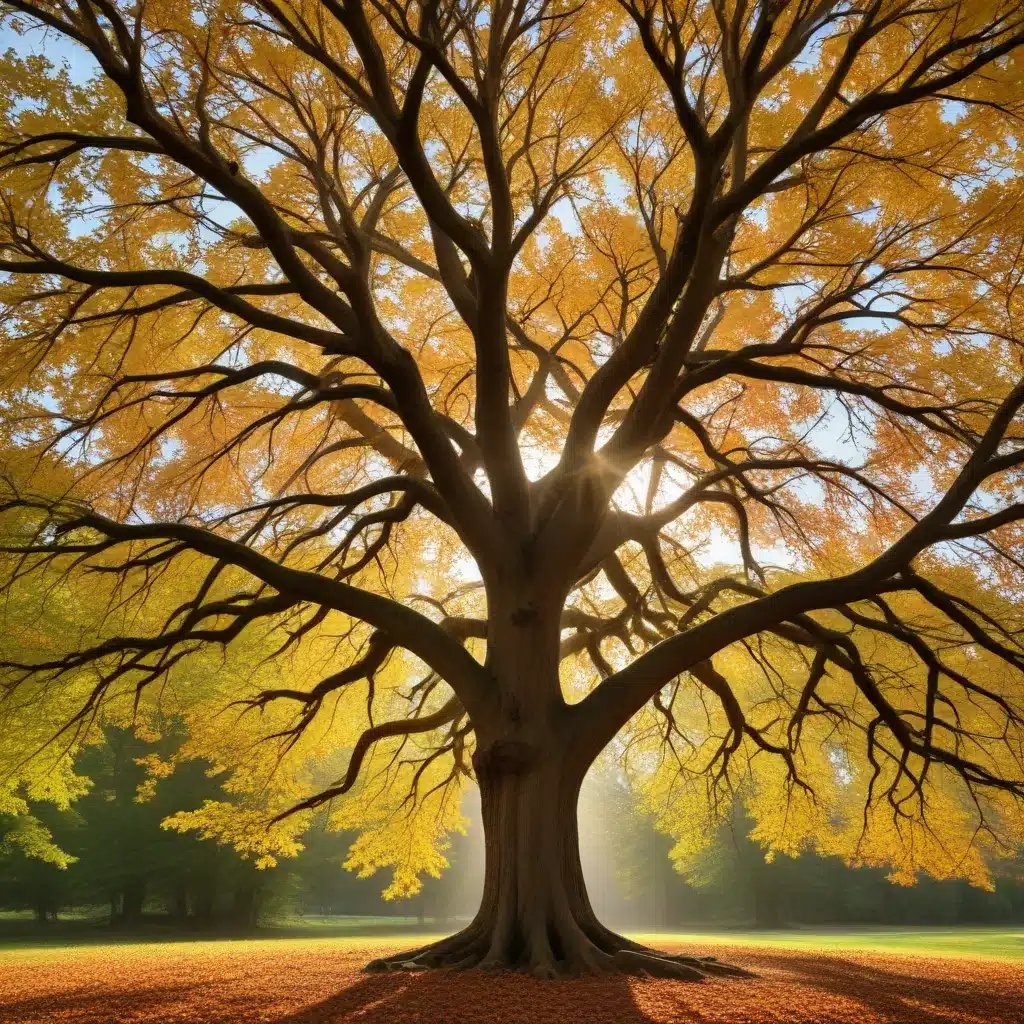
As tree care specialists at TriCounty Tree Care, we’re often asked about the intriguing seasonal changes and adaptations observed in trees. Why do leaves change color and drop in the fall? How do trees withstand harsh winter conditions? What cues trigger the resurgence of growth in spring? To unlock these mysteries, we must delve into the intricate world of tree phenology and physiology.
Tree Phenology: Seasonal Cycles and Environmental Cues
Trees, like many organisms, exhibit distinct seasonal patterns in their growth and development. This phenological cycle is driven by a variety of environmental factors, primarily temperature, precipitation, and photoperiod (day length). As the seasons transition, trees respond to these cues through a series of physiological changes.
In the fall, decreasing daylight and cooling temperatures signal to the tree that winter is approaching. This triggers the abscission process, where leaves are shed to conserve resources. The green chlorophyll in leaves breaks down, revealing the vibrant carotenoid pigments – reds, oranges, and yellows – that were present all along. This colorful display is not only visually captivating but also an adaptive mechanism, as the loss of leaves reduces transpiration and minimizes the risk of winter desiccation.
During the winter months, trees enter a state of dormancy, suspending growth and metabolism. This adaptation allows them to withstand the harsh conditions, such as freezing temperatures and snow cover. Some species, like the remarkable creosote bush (Larrea tridentata) of the American Southwest, even develop chemical defenses to deter herbivores when resources are scarce.
As spring approaches, trees awaken from dormancy in response to rising temperatures and increasing daylight. Bud break, leaf expansion, and the resumption of photosynthesis and growth signify the tree’s return to active life. This reawakening is a delicate process, as premature growth can leave trees vulnerable to late frost damage.
Tree Physiology: Adapting to Seasonal Demands
Beneath the seasonal changes in appearance lies a complex network of physiological adaptations that allow trees to thrive throughout the year. At the core of this are the fundamental processes of photosynthesis and respiration.
During the growing season, trees harness the energy of sunlight to convert carbon dioxide and water into glucose, the primary fuel for growth and development. This photosynthetic activity slows down as daylight hours diminish, and the trees shift their focus to storing resources for the dormant period.
Water and nutrient uptake also fluctuates with the seasons. In the spring, the thawing of frozen soil and rising temperatures stimulate the tree’s vascular system to become active, drawing water and essential minerals from the ground. As leaves transpire and growth accelerates, the demand for water increases. Conversely, during the winter, the uptake of water and nutrients is greatly reduced to conserve resources.
The cycles of growth and dormancy are further refined through the interplay of various plant hormones, such as auxins, cytokinins, and abscisic acid. These chemical messengers regulate bud break, cambial activity, and leaf abscission, enabling the tree to adapt to the changing environmental conditions.
Climatic Factors and Evolutionary Adaptations
The seasonal behaviors and physiological adaptations of trees have been shaped by the climatic conditions of their native habitats over millennia of evolutionary history. Species inhabiting regions with distinct seasonal variations have developed a remarkable array of strategies to thrive.
For example, the aforementioned creosote bush, a keystone species of the American Southwest, has evolved a deep, extensive root system and the production of toxic compounds to deter herbivores during periods of drought and resource scarcity. In contrast, trees adapted to temperate forests, such as the mighty oak (Quercus spp.), exhibit a high degree of genetic diversity and phenotypic plasticity, allowing them to respond to the unpredictable weather patterns of their environment.
Ecosystem Dynamics and Forestry Implications
The seasonal rhythms of trees are not isolated phenomena but rather integral components of the complex forest ecosystem. As trees transition through their annual cycles, they play crucial roles in supporting the web of life, from providing shelter and sustenance for wildlife to regulating local microclimates and nutrient cycling.
Understanding the seasonal dynamics of trees is crucial for sustainable forestry practices. Foresters and arborists must consider the unique needs and adaptations of each species to develop management strategies that promote the long-term health and resilience of urban and rural tree populations. This knowledge also informs our efforts to mitigate the impacts of climate change, as we strive to select and cultivate tree species that can thrive in a shifting environmental landscape.
Researching Seasonal Tree Behavior
The study of seasonal tree behavior and adaptation is a dynamic field, with researchers employing a variety of methodologies to unravel its complexities. Field observations, experimental studies, and computational modeling all contribute to our understanding of these natural phenomena.
By closely monitoring the phenological events and physiological responses of trees, scientists gain valuable insights into the intricate dance between organisms and their environment. Experimental manipulations, such as altering temperature or light regimes, provide a controlled setting to isolate the factors driving seasonal changes. And the development of sophisticated simulation models allows researchers to explore the long-term implications of climatic shifts on tree populations and forest ecosystems.
At TriCounty Tree Care, we are dedicated to staying at the forefront of this ever-evolving field. By leveraging the latest scientific knowledge and collaborating with researchers, we strive to provide our clients with the most comprehensive and evidence-based tree care solutions. From optimizing seasonal pruning schedules to selecting climate-resilient species for urban landscapes, our expertise in seasonal tree behavior and adaptation is the key to unlocking the full potential of the trees in our communities.


